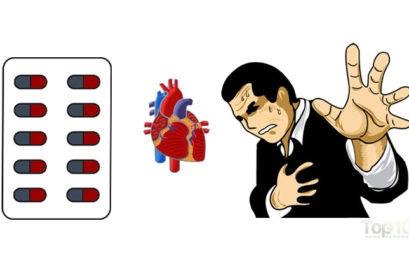Today's personal computers are very different from the massive, clumsy devices that arose during the Second World War, and the difference is not only in their size. The "fathers" and "grandfathers" of modern desktops and laptops did not know how much of what modern machines can easily cope with. However the very first computer in the world was a breakthrough in science and technology. Sit back in front of the monitor, and we'll talk about how the PC era was born.
Who created the very first computer in the world
In the 40s of the last century, there were several devices that could claim to be the first computer.
Z3

An early computer created by German engineer Konrad Zuse, who worked in complete isolation from other scientists. It had a separate memory unit and a separate console for data entry. And their carrier was an eight-track punch card made by Zuse from 35 mm film.
There were 2600 telephone relays in the car and it could be freely programmed in binary code with a floating point. The Z3 was used for aerodynamic calculations, but was destroyed during the bombing of Berlin in late 1943. Zuse led the reconstruction of his brainchild in the 1960s, and now this programmable machine is on display at the Museum of Munich.
Mark 1

The Mark 1 device, conceived by Professor Howard Aiken and released by IBM in 1941, was America's first programmable computer. The machine cost half a million dollars, and was used to develop equipment for the US Navy, such as torpedoes and underwater detection equipment. Also, “Mark 1” was used in the development of implosion devices for the atomic bomb.
That "Mark 1" can be called the very first computer in the world. Its characteristics, unlike the German Z3, made it possible to perform calculations in automatic mode, without requiring human intervention in the work process.
Atanasoff-Berry Computer (ABC)

In 1939, Professor John Vincent Atanasov received funds to create a machine called the Atanasoff-Berry Computer (ABC). It was designed and built by Atanasov and graduate student Clifford Berry in 1942. However, the ABC device was not widely known before the patent litigation related to the invention of the computer. It was only allowed in 1973 when it was proven that ENIAC co-author John Mockley saw the ABC computer shortly after it became functional.
The legal result of the lawsuits was significant: Atanasov was declared the initiator of several basic computer ideas, but the computer as a concept was declared non-patentable and, therefore, freely open to all developers. A full-scale working copy of ABC was completed in 1997, proving that the ABC machine functioned as Atanasov claimed.
ENIAC

ENIAC was developed by two scientists from the University of Pennsylvania - John Eckert and John Mockley. He could solve "a wide range of numerical problems" by reprogramming. Although the car was presented to the public after the war, in 1946, it was important for calculations during subsequent conflicts, such as the Cold War and the Korean War. It was used for calculations in creating a hydrogen bomb, engineering calculations and creating shooting tables. She also made weather forecasts in the USSR so that Americans knew where the fallout could occur in the event of a nuclear war.
Unlike Mark 1 with its electromechanical relays, ENIAC had vacuum tubes. It is believed that ENIAC has performed more calculations in its ten years of operation than all of humanity until then.
Edsac

The first computer with in-memory software was called EDSAC. It was assembled in 1949 at Cambridge University. The project for its creation was led by Professor Cambridge and Director of the Laboratory for Computational Research at Cambridge Maurice Wilkes.
One of the major advances in programming was Wilkes' use of a short program library called "routines." It was stored on punch cards and was used to perform general repetitive calculations within the lager program.
What did the first computer in the world look like?
The American "Mark 1" was huge, occupying a length of over 17 meters and a height of over 2.5 meters. The machine, in a shell made of glass and stainless steel, weighed 4.5 tons, and the total length of its connecting wires almost reached 800 km. For the synchronization of the main computing modules, a fifteen-meter shaft responded, which set in motion a 4 kW electric motor.

Even harder than Mark 1 was ENIAK. He weighed 27 tons, and required 174 kW of electricity. When it was turned on, city lights dimmed. The car had neither a keyboard nor a monitor, it occupied an area of 135 square meters and was entwined with kilometers of wires. To get an idea of the appearance of ENIAC, imagine a long row of metal cabinets, which are lit from top to bottom with light bulbs. Since there was still no good cooling at the computer, it was very hot in the room where it was located, and ENIAK crashed.

The first Soviet computer
In the USSR, they did not want to lag behind the West and conducted their developments on the creation of computers. The result of the efforts of Soviet scientists was "Small electronic calculating machine" (MESM). Its first launch took place in 1950. At MESM, 6 thousand lamps were used; it occupied an area of 60 square meters. m and required up to 25 kW for operation.

The device could perform up to 3 thousand operations per second. MESM was used for complex scientific calculations, then it was used as a teaching aid, and in 1959 the car was dismantled.
In 1952, MESM had an older sister - "Big electronic calculating machine" (BESM). The number of electronic lamps in it increased to 5 thousand, and the number of operations per second increased from 8 to 10 thousand.

The world's first commercial computer
UNIVAC 1, introduced in the USA in 1951, can be called the first computer designed for commercial use.

He became famous after using a survey of 1% of the voting population to correctly predict that General Dwight Eisenhower would win the 1952 election. When people understood the capabilities of computer data processing, many enterprises began to purchase this machine for their needs.
The very first personal computer in the world
For the first time the term "personal computer" was applied to the creation of the Italian engineer Pierre Giorgio Perotto under the name Programma 101. Released by Olivetti.

The device cost $ 3200 and sold around 44,000 copies. Ten pieces were bought by NASA to be used to calculate the Apollo 11 moon landing in 1969. The ABC (American Broadcasting Company) network used Programma 101 to predict the 1968 presidential election. The US military used it to plan their operations during the Vietnam War. It was also procured for schools, hospitals and government agencies and marked the beginning of an era of rapid development and sales of PCs.
The first mass-produced home computer abroad
In 1975, an article about a new computer kit, Altair 8800, appeared in one of the issues of the magazine Popular Electronics. Within a few weeks after the device appeared, customers inundated its manufacturer, the company MITS, with orders. The machine was equipped with 256-byte memory (expandable up to 64 Kb) and a universal interface bus, which turned into the S-100 standard, which was widely used in amateur and personal computers of that era.

The Altair 8800 could be bought for $ 397. After the purchase, the owner of the radio amateur had to solder and check the operability of the assembled nodes on his own. The difficulties did not end there; there was still a need to master writing programs using zeros and ones. The Altair 8800 did not have a keyboard or monitor, hard drive, or drive. To enter the desired program, the user clicked the toggle switches on the front panel of the device. And checking the results was carried out by observing the bulbs flashing on the front panel.
AND In 1976, the first Apple computer appearedDesigned and crafted by Steve Wozniak and touted by his friend Steve Jobs as Apple Computer's first product. Apple 1 is considered to be the first pre-packaged PC.

In fact, the device had neither a monitor nor a keyboard (it was possible to connect them). But there was a fully equipped circuit board on which there were 30 chips. Altair 8800 and other devices that entered the market didn’t have this either; they had to be assembled from a set. Initially, Apple 1 had an almost “hellish” price of $ 666.66, but a year later it was reduced to $ 475. Later, an additional board was released, which allowed recording data on a cassette recorder. It cost $ 75.
The first mass-produced home computer in the USSR
Since the 80s of the XX century in Bulgaria began to produce a computer called "Pravets". It was a clone of the second version of Apple. Another clone included in the Pravets line was the “Soviet” IBM PC, based on Intel 8088 and 8086 processors. The later Oric Atmos clone was the “home” Pravets 8D model in a small case and with a built-in keyboard. It was produced from 1985 to 1992. Computers "Pravets" were in many schools of the Soviet Union.

Those who wanted to build a home computer could use the instructions in the 1982-83 Radio magazine. and play a model called Micro-80. It was based on the KR580VM80 microprocessor, similar to the Intel i8080.
In 1984, the Agate computer appeared in the Soviet Union, which is quite powerful compared to Western models. The amount of RAM was 128 KB, which is twice the amount of RAM in Apple models of the early 80s of the twentieth century. The computer was produced in several versions, had an external keyboard with 74 keys and a black-and-white or color screen.

Production of "Agates" went on until 1993.
Computers of the present
Today, modern computer technology is changing very quickly. The most powerful computers of our time are billions of times superior to their ancestors. Every company wants to surprise already saturated users, and many still succeed in this. Here are just a few of the main topics in recent years:
- A laptop that has had an important impact on industry development: Apple Macbook (2006).
- Smartphone that has had an important impact on industry development: Apple iPhone (2007).
- The tablet that has had an important impact on the development of the industry: Apple iPad (2010).
- The first "smart watch": Pulsar Time Computer (1972). They can be seen on James Bond’s hand in the 1973 action movie “Live and Let Die”.
And, of course, various game consoles: Playstation, Xbox, Nintendo, etc.
We live in an interesting time (although this sounds like a Chinese curse). And who knows what awaits in the near future. Neural computers? Quantum computers? Wait and see.












